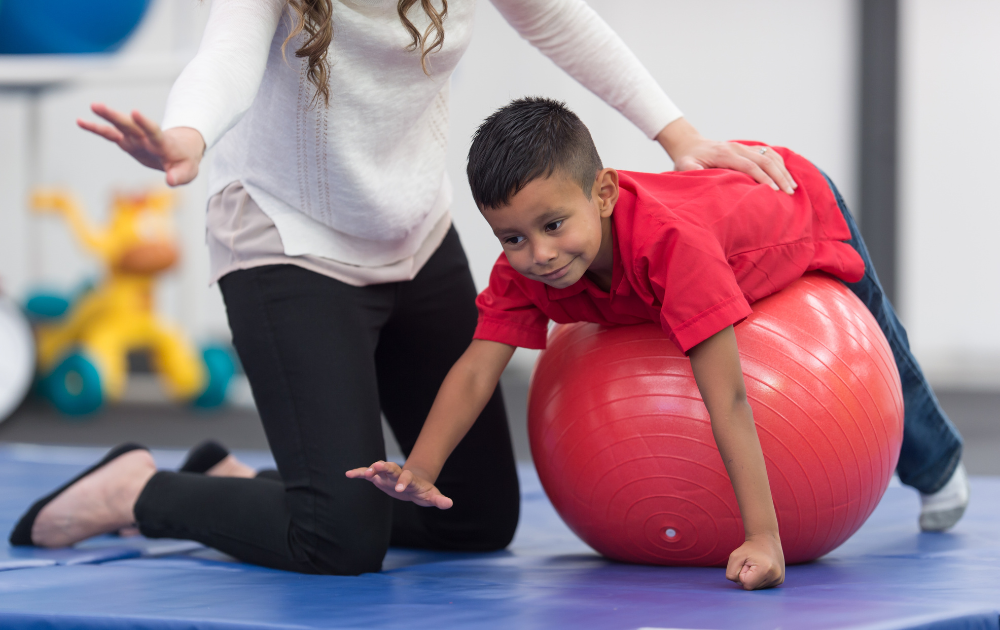Many individuals on the autism spectrum find comfort in deep-pressure activities. These activities involve applying gentle, firm pressure to the body, which can help calm anxiety and improve focus.
Just like a warm hug can make you feel safe, deep pressure offers a soothing sensation that promotes relaxation and emotional stability. These techniques can make a big difference in daily life, from weighted blankets to squeezing stress balls.
Exploring deep-pressure activities opens up a world of sensory experiences that can enhance well-being and help individuals feel more grounded in their environments.
What Are Deep Pressure Activities?
Deep pressure activities involve applying gentle to firm pressure on the body to calm and organize sensory input. These activities aim to help individuals with autism regulate their sensory experiences, reduce anxiety, and improve focus.
These activities create a sensation of security and comfort by applying deep pressure to the body, aiding in sensory processing.
That said, deep-pressure activities offer a range of benefits for individuals with autism. These activities can help in:
- Calming Sensory Overload: Deep pressure provides a grounding sensation that can help individuals cope with sensory overload and anxiety.
- Improving Focus: The sensory input from deep-pressure activities can enhance concentration and focus, making it easier to engage in tasks.
- Enhancing Body Awareness: By experiencing varied pressure sensations, individuals can improve their body awareness and proprioception.
- Promoting Relaxation: Deep-pressure activities have a soothing effect, promoting relaxation and reducing stress levels.
Using deep-pressure activities as part of a sensory-informed approach can greatly benefit individuals with autism by supporting their sensory needs and promoting overall well-being. Through thoughtful selection and implementation of deep-pressure techniques, caregivers and individuals themselves can create a nurturing environment that fosters sensory regulation and emotional stability.
Types of Deep Pressure Activities
Deep-pressure activities are designed to offer comfort, security, and relaxation. Let’s delve into three common types of deep-pressure activities that autistic individuals can gain access to.
Weighted Blankets and Lap Pads
Weighted blankets and lap pads are among the most popular deep-pressure activities for individuals with autism. These are designed to provide gentle, consistent pressure on the body, creating a calming and grounding effect.
The added weight mimics the sensation of a comforting hug, helping to reduce anxiety and promote relaxation.
That said, it’s important to select a weighted blanket or lap pad that is appropriately sized and weighted for the individual’s needs. Consulting with an occupational therapist can help determine the ideal weight and size to maximize the benefits of these deep-pressure activities.
Compression Clothing
Compression clothing, such as vests, shirts, or socks, applies gentle pressure to the body, similar to a continuous hug. This deep-pressure input can help individuals with autism feel more secure and regulated, reducing sensory overload and promoting a sense of calm.
As you choose compression clothing, it’s essential to choose garments that provide a snug but comfortable fit. The pressure level should be tailored to the individual’s preferences and sensory needs. Regular monitoring and adjustment of the clothing can ensure that it continues to be effective in providing deep pressure input.
Body Socks
Body socks are stretchable, fabric-based tubes that individuals can wear to experience deep pressure input throughout their bodies. These socks offer a cocoon-like sensation, promoting body awareness, calming sensory overload, and improving focus and attention.
Body socks come in various sizes to accommodate different body shapes and sizes. They are often used during playtime, therapy sessions, or moments when the individual needs additional sensory input to regulate their sensory experiences effectively.
DIY Deep-Pressure Activities
Autistic individuals can also engage in do-it-yourself (DIY) deep-pressure activities as a means of providing sensory input and promoting a sense of calm. Two popular DIY deep-pressure activities that are easy to create and implement are making a sensory sock and creating a calming sensory corner.
Let’s look at how you can make them.

Making a Sensory Sock
A sensory sock, also known as a compression or body sock, is a stretchy, form-fitting garment that provides gentle pressure to the body. Making a sensory sock at home can be a simple and cost-effective way to offer deep pressure input for individuals with autism.
Here is a basic guide on how to make a sensory sock:
- Measure the individual’s body dimensions to ensure a snug fit.
- Cut the fabric to the appropriate size based on the measurements. Leave openings for the head, arms, and legs.
- Sew the fabric together, leaving the openings and closures accessible. Make sure the seams are secure.
- Add any optional weight inserts if desired.
A sensory sock can be a comforting tool for individuals with autism, offering a sense of security and containment through gentle pressure.
Creating a Calming Sensory Corner
A calming sensory corner is a designated space in the home or learning environment that is designed to provide comfort and relaxation for individuals with autism. This space can incorporate various sensory elements, including deep-pressure activities, to help regulate emotions and promote self-soothing.
Here are some key elements to consider when creating a calming sensory corner:

Setting up a calming sensory corner tailored to the individual’s preferences and sensory needs allows caregivers to offer a safe and supportive space for sensory regulation and emotional well-being.
Engaging in DIY deep-pressure activities like making a sensory sock and creating a calming sensory corner can provide individuals with autism valuable sensory input and promote feelings of comfort and security within their environment.
Final Thoughts
Deep-pressure activities can be a game-changer for many individuals with autism. They offer comfort, reduce anxiety, and help improve focus, making daily life a bit easier and more enjoyable.
Whether it’s using weighted blankets, engaging in gentle squeezes, or exploring calming exercises, these activities can provide soothing sensations that many find beneficial. By understanding and incorporating deep pressure techniques into routines, we can create a supportive environment that promotes well-being and helps individuals thrive.
So, let’s embrace these simple yet powerful tools to make a positive impact in the lives of those with autism! At Golden Care Therapy, we provide high-quality ABA therapy in New York, ensuring that each child receives personalized support tailored to their unique needs.
Our dedicated team is committed to fostering growth and independence in a supportive environment. If you want to take the next step, contact us today to learn more about how we can help your loved one thrive!
Sources:



